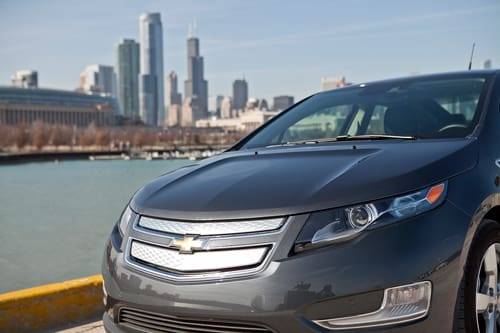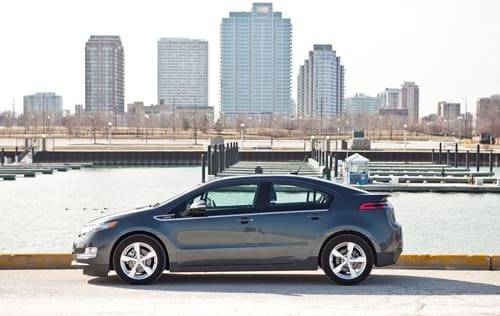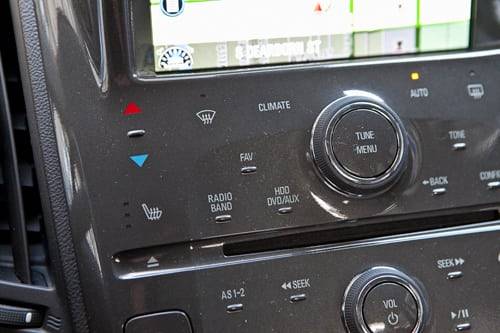Cars.com Chevy Volt Hits 10,000 Miles: The Good and Bad


Some trauma has been visited upon the Volt by a hungry varmint and an unfortunate but enlightening collision, but with the exception of a software upgrade, the car itself has been trouble-free. Only the 120-volt charging unit had to be replaced, under warranty, when it failed after seven months.
What we like
Cars.com’s editors universally appreciate the Volt’s smooth, quiet ride. The cabin itself remains admirably quiet once the gas engine turns on, though the noise is more intrusive than it seemed when I first reviewed the car. Cold weather intensifies it because the engine runs at higher rpm, even at low speeds, to generate warmth.
We also appreciate how accurately the Volt predicts its range. In this regard, our 2011 Nissan Leaf is an enigma. Frankly, we’d prefer the opposite, as the stakes are higher when the Leaf runs out of juice.
Running on electricity: It’s nice not having to frequent gas stations. We could engage in a lengthy debate about how clean an electric car truly is on the grand scheme, and I can’t say I’m a fan of electric utilities, but all the same I underestimated how satisfying it is to not burn petroleum for up to 50 miles. Some of our editors commute in the Volt without using gas at all, depending on conditions. The cost of operation on electricity is undeniably lower than it is for a comparable gas-powered or hybrid car.


Another shortcoming is one you don’t experience every time you drive, and that’s the premium gas requirement. If you run electric-only, all is well, but cars like the Volt are often purchased to save money on fuel (if not the car itself). Premium gas is the province of luxury and high-performance cars, and likely Volt buyers have never touched a premium nozzle in their lives. At an estimated 37 mpg once the engine turns on, the Volt is reasonably efficient, but more affordable cars with comparable interior space are now pushing 40 mpg on regular gas. Having the on-board generator as a backup is key to the Volt’s “value proposition,” but the incongruity of filling it with premium fuel when the battery runs out is its own kind of penalty. It isn’t as bad as getting stranded in a purely battery-electric car, but it’s a monetary and existential penalty regardless.
The visibility issues haven’t eased. Some Cars.com editors find it difficult to visualize where the front bumper is, and a higher seating position only worsens the obstructive low roofline. The bifurcated rear window is even worse: The lower pane collects dirt and water and typically fails to function as a window at night. We can’t imagine owning this car without the optional backup camera.

Interior space: The moms and dads on staff found one of the Volt’s other major shortcomings, and that’s limited space for child-safety seats. Frankly, our editors are split on the issue of backseat space for adults, because some object to begging legroom from front occupants and/or they don’t like the high center console between the two seats. But when it comes to child-safety seats, there’s about as much room for argument as there is for the seats themselves. The Volt has no center position, and the console crowds the child-safety seats and complicates their installation. Even if you seldom use the center position in a car’s backseat, it’s valuable overspill area for a child seat.

Finally, the touch-sensitive center control panel has only one fan on our staff. Others object to the lack of physical buttons and the slapdash button arrangement.
Despite the nine weeks it spent at the body shop, our car is pretty close to achieving the national average of 12,000 miles per year. We’ll continue to report on the Volt experience, including the expected and unexpected.

Former Executive Editor Joe Wiesenfelder, a Cars.com launch veteran, led the car evaluation effort. He owns a 1984 Mercedes 300D and a 2002 Mazda Miata SE.
Featured stories




